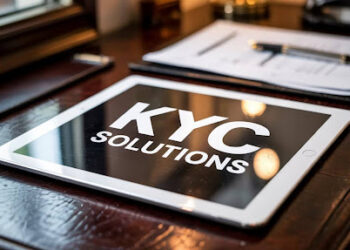Remember when we all thought talking to our computers was something out of Star Trek? Well, grab your coffee because the future just knocked on your door – and it’s asking you to ditch your keyboard.
Last Tuesday, Sarah from our sales team was stuck in downtown traffic and was twenty minutes late for her next client meeting. But instead of stressing about it later (and likely forgetting half of the details), she just started to talk to her phone, “Hey, update the Morrison account they are ready to move forward with the premium package, the budget is approved, and I need to call them back Thursday morning.”
By the time she pulled into the parking lot, she had already completed her update, her follow-up was planned, and she walked into that meeting completely focused on her client instead of worrying about the paperwork.
This is exactly why businesses everywhere are trying to figure out voice technology.
Why Everyone’s Suddenly Talking About Voice CRM
Here’s the thing nobody talks about: most salespeople didn’t sign up to become data entry clerks. Yet somehow, that’s where they spend a huge chunk of their day. Recent studies show that for every hour spent with actual customers, sales reps spend another 30 minutes just updating systems and filling out forms.
Voice-enabled CRM flips this whole equation. Suddenly, updating your customer database becomes as easy as thinking out loud. And with voice commerce hitting $40 billion this year alone, companies that ignore this shift might find themselves explaining to their shareholders why their competitors are running circles around them.
The smart money is on finding a solid CRM development company that actually gets this technology-not just someone who can bolt a microphone onto your existing system and call it “innovative.”
What Voice CRM Actually Does
Forget the fancy technical terms for a minute. Voice-enabled CRM is basically like having an incredibly efficient assistant who never sleeps, never forgets, and can instantly access every piece of customer information you’ve ever collected.
Here’s how it plays out in real life:
- Walk into the office and say, “What’s my schedule looking like today?” – boom, your daily agenda appears
- Finish a client call and immediately dictate your notes while everything’s fresh in your mind.
- Ask, “How’s the Henderson deal progressing?” and get an instant update
- Tell the system to block out time for a follow-up call next week.
- Request a report on quarterly sales performance while you’re grabbing lunch.
The magic happens because you’re working with your natural patterns instead of fighting against them.
The Real Benefits (That Actually Matter to Your Bottom Line)
Time Gets Back in Your Pocket
Marcus, one of our top performers, used to spend his Sunday evenings catching up on CRM updates from the week. Now? He talks through his deals during his commute home each day. Sunday is back to being Sunday, and his customer data is more accurate than ever because he’s capturing details while they’re still fresh.
Your Data Actually Becomes Useful
When you’re typing, you stick to the basics just enough information to get by. When you’re talking, you naturally include context, emotional cues, and those little details that can make or break a deal later. The system now understands that when you mention a client “seemed hesitant about the timeline”, that’s valuable intelligence for your next conversation.
Everyone Can Participate
Voice technology has become a game-changer for team members who struggle with traditional interfaces. Be it arthritis making typing difficult, dyslexia making forms frustrating, or you just being a better learner when speaking rather than typing voice CRM is making the playing field more level in ways we have yet to know.
The Behind-the-Scenes Magic (Without Getting Too Nerdy)
Building a voice CRM that actually works isn’t like programming a simple calculator. The system needs to understand that when Jim from accounting says “update the quarterly projections” and when Lisa from sales says “bump up the Q4 forecast,” they’re probably talking about completely different things.
A decent CRM development company has to solve three main puzzles:
Teaching Computers to Speak Human
People don’t talk like instruction manuals. We use shortcuts and inside jokes and sometimes trail off mid-sentence when someone walks into our office. The best systems learn your team’s specific language patterns and industry terminology. They understand that “move that deal to stage three” and “advance the ABC Corp opportunity” mean the same thing in your world.
Protecting Private Conversations
Every word you speak to your CRM contains sensitive customer information. The security has to be bulletproof encrypting voice data the instant you speak, storing it safely, and making sure only authorized team members can access it. Think of it as having a conversation inside a bank vault, but more convenient.
Working Where You Actually Work
It’s not like anyone is ever stuck at a desk anymore. Your CRM needs to work perfectly when getting work done on your desktop, when you’re talking to your smartphone in the car, or when you’re engaging your conference room smart speaker to get an update in the meeting.
Where the Rubber Meets the Road
Sales Teams Finally Getting Their Lives Back
Jennifer closes more deals now not because she is working more hours, but due to working smarter hours. Following every client conversation, she is able to record everything she can remember as she walks to her car: the client pain points, budgetary limitations, the time frame for a decision and the key decision makers, and what her next action steps are. There are no more 8pm Sunday panic sessions trying to figure out what happened during the Tuesday meeting.
Customer Service That Actually Serves
Phone support agents can now access customer histories, create support tickets, and update case statuses without ever interrupting their conversation flow. No more awkward holds while agents hunt through multiple screens. The customer gets immediate attention, and the agent captures everything accurately.
Field Teams Staying Connected
Technicians working on-site equipment can update job progress, request replacement parts, and access troubleshooting guides without stopping work or removing safety gloves. It’s transformed both productivity and workplace safety.
What’s Coming Next (And Why It Matters Now)
The technology is evolving fast. Before long, your CRM will not only hear your words, it will hear your nuances. Imagine a CRM that can tell you are showing frustration, perhaps while giving a deal update, and it will pre-suggest next steps if you wish. Or a CRM that can hear that an opportunity is exciting and is more likely to be flagged for management involvement because the system frequently recognizes themes of enormous potential.
We’re heading toward CRM systems that become true business partners, offering insights and recommendations based on conversation patterns, emotional context, and years of accumulated team knowledge.
Making the Jump Without Breaking Your Business
The transition to voice-enabled CRM represents more than just buying new software – it’s about fundamentally changing how your team thinks about customer relationships. Companies making this shift now are discovering happier employees, richer customer data, and more time for actual relationship building.
But here’s the catch: success requires partnering with a CRM development company that understands this isn’t just about adding voice features to existing systems. The entire customer interaction workflow needs rethinking from scratch.
Companies winning in this new landscape aren’t necessarily the companies with the most funding—they are those that are willing to rethink what customer relationship management really means in practice.
Your competitors are already having these conversations.The question is whether you’ll be leading this transformation or scrambling to catch up six months from now.
Because honestly, once you experience updating your CRM just by thinking out loud, going back to clicking through endless forms feels like switching from a smartphone back to a rotary phone. Some changes, once you make them, become impossible to reverse.












